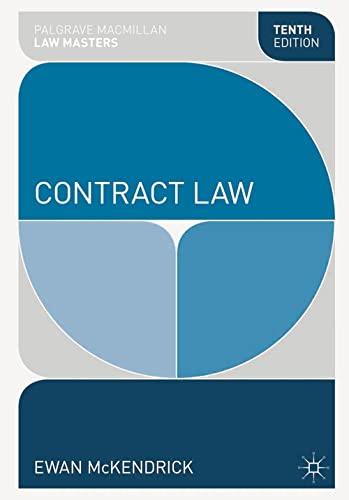Question
Summarize this Chapter from to make a short study guide do not use other material, just stay on the topic Chapter X: Managing the Litigation
Summarize this Chapter from to make a short study guide
do not use other material, just stay on the topic
Chapter X: Managing the Litigation Process
Chapter Outcomes/Objectives:
Manage litigation process
Chapter Discussion:
It goes without saying, but we'll say it anyway; when it comes to resolving a commercial debt collection dispute, do whatever you can to avoid litigation. In cases where litigation is inevitable, it's important to know what to expect.
Litigation is a lengthy process
The entire process of litigation is a series of fitsandstarts. To make matters worse, the financial situation of your debtor can deteriorate during the process. Take a look at the following legal flow. Each of the wait days listed is just an approximate but a generally reasonable estimation of the time it will take to get through each of the stages.
The following is by no means a complete list of the stages you may go through. Snags at any point, like stall tactics or a counter claim, can change the trajectory entirely and add months or even years to your process. But this list will give you a little peek at what you could be facing.
Attorney review, make demand, prepare suit: 30 days
Serve the debtor: 15 - 45 days if served on first attempt, 60 - 90 days if more attempts are necessary
Time for debtor to answer: 30 days
File/Receive default Judgment if debtor does not answer suit: 60150 days then proceed to Execution Stage
File/Decision for Summary Judgment if debtor does answer suit: 90120 days
If Summary Judgment Denied then Continue Discovery, Mediation, wait for Trial date: 90120 days
Judgment Granted/Appeal: 60 days
Execution if assets identified: 60 - 120 days
Post Judgment Discovery if assets not identified: 60120 days then Execution once assets identified
Assuming the debtor has identifiable assets and if a default judgment route is an option, the process can still take 9 months to a year to complete. If you go to trial, the bestcase scenario will probably take about a year and half.
It would be very difficult to keep this chapter a reasonable length if we were to outline ALL the possible ways litigation can be delayed. Every action or inaction on your debtor's part can add its own set of paperwork and delays. But here's the thing: no matter what comes your way in litigation, at the end of the process, you'll STILL be negotiating.
So, we're back to our original advice - work with your debtor every way possible to come to a resolution BEFORE you consider litigation.
Step by Step Solution
There are 3 Steps involved in it
Step: 1

Get Instant Access to Expert-Tailored Solutions
See step-by-step solutions with expert insights and AI powered tools for academic success
Step: 2

Step: 3

Ace Your Homework with AI
Get the answers you need in no time with our AI-driven, step-by-step assistance
Get Started


